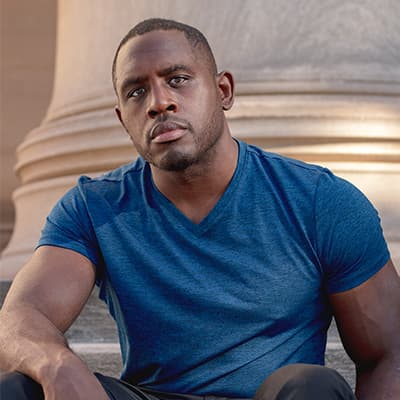My last fight was on December 16, 2016. On July 12, 2025, I stepped back into a professional boxing ring for the first time in nearly nine years—and walked out with a first-round TKO.
I was 40 years old when I made my return. A lot had changed. Not just in the sport—but in me.
When I retired in 2017, I wrote this article explaining my decision. When I decided to come back in 2024, I wrote another this article explaining why.
I didn’t write those pieces just to answer questions from curious fans. I wrote them to process my own thinking, to make sure I wasn’t acting on ego or nostalgia. There was never one simple reason I walked away—or came back.
In this article, I want to share what it’s really like to train and fight at 40. The pros. The cons. The mental shifts. The physical realities. And the surprising benefits that came from doing something many people people told me was a bad idea.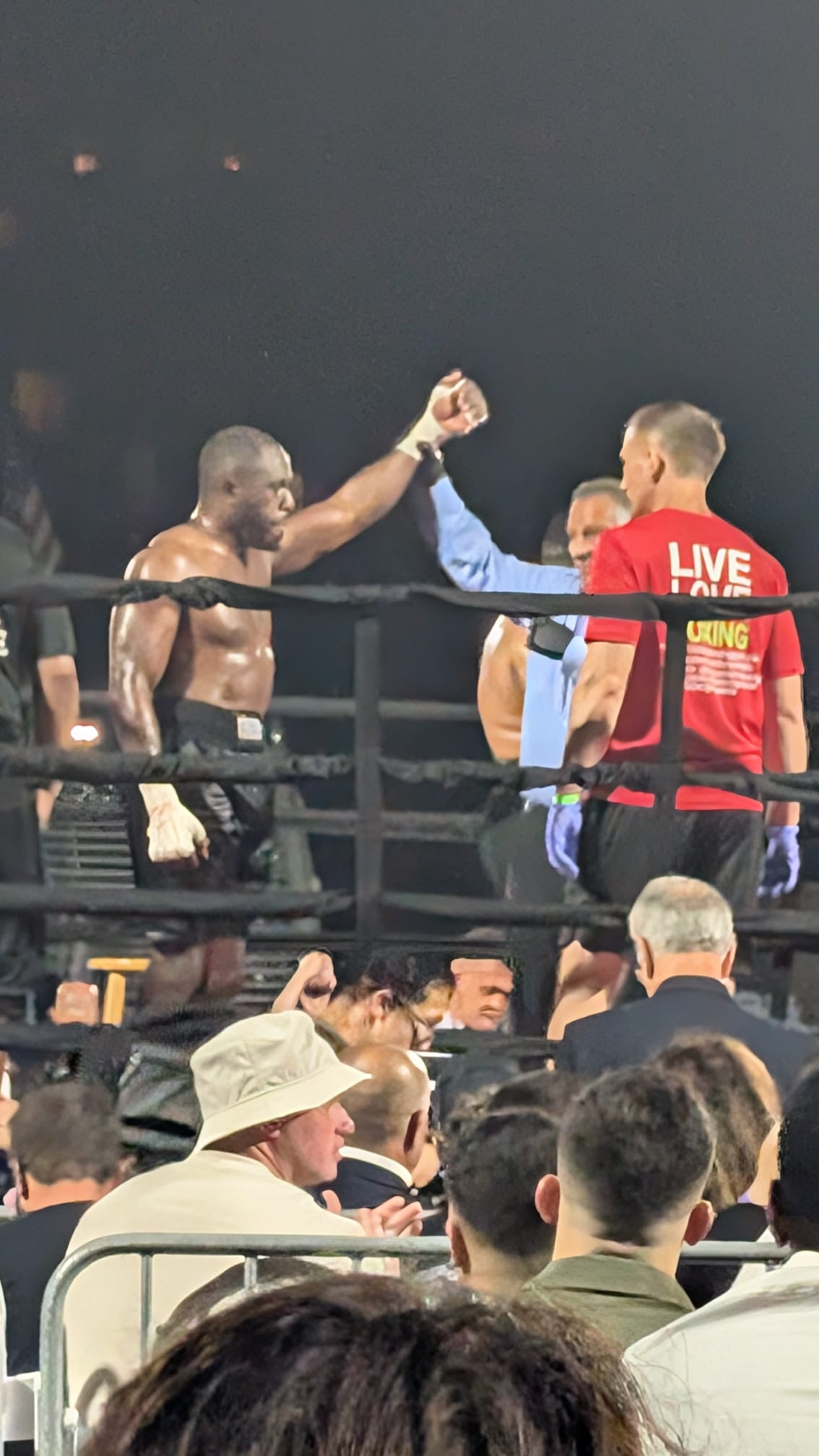
Why I started boxing again at 40
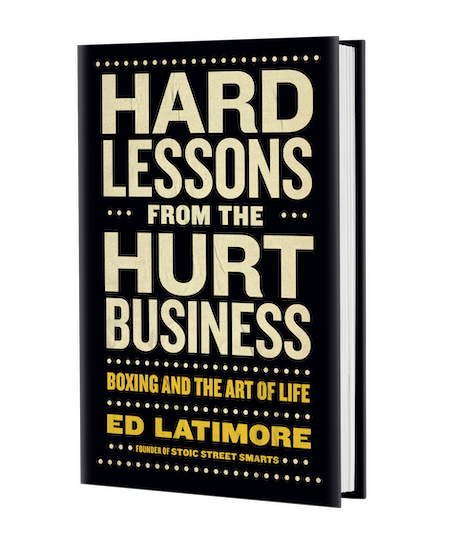
The short version? My new book, Hard Lessons From The Hurt Business: Boxing And The Art of Life, comes out August 5, 2025. It’s a memoir that tells the story of how boxing helped me escape poverty, addiction, and self-destruction.
Fighting again just made sense. It aligned with the spirit of the book—and satisfied a curiosity I’d carried for years. I always wondered what would happen if I came back. Now I know.
The Challenges of Boxing at 40 are not what you’d expect
The first thing on your mind is likely how I feel physically compared to my late 20s and early 30s, when I was boxing before. While I’m not delusional enough to think there’s no difference in my physical capacity between then and now, I have to be completely honest with you: I feel great.
But that’s only because I generally live a healthy and active lifestyle. I don’t drink, never smoked, I’m not a fan of sweet things, and I usually get adequate sleep. We spend a lot of time outdoors taking walks, and I never stopped going to the gym—even if it was just to get a lift in and do some cardio.
Compared to the average person, I’m in great shape. Compared to the average boxer, when I first started this journey to get back into the ring, I had to work toward that. The only thing worse than building an aerobic base is rebuilding an aerobic base.
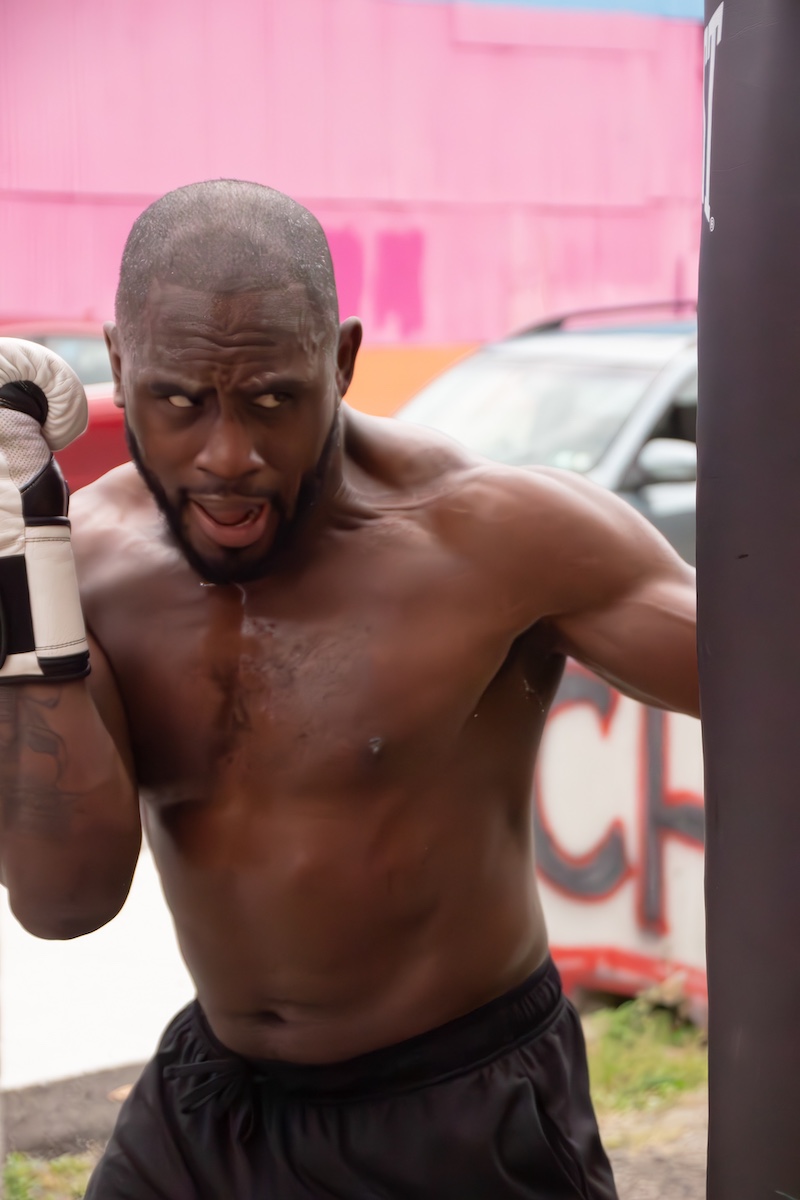
I’ve taken three extended layoffs from the sport, and none were nearly this long. The first was a six-week break during my amateur career to let a hyperextended elbow heal. The second was a 14-week layoff to recover from a blowout fracture, and the third was a seven-month layoff when I enlisted in the Army National Guard and was away for basic training and AIT.
In each of those instances, getting back the cardiovascular capacity to train hard was the most challenging part. Cardio is the first thing to go and the most grueling thing to get back. This time was no different.
In your mind, it’s nothing to do a three-mile warmup in under 25 minutes and then train for three more hours. But unless you train consistently at that intensity level, there’s no way to maintain it. You just think you can—until your body reminds you otherwise.
Boxing gets you into the best shape you’ll ever be in, but to compete and have the stamina to actually learn the sport, you need a base level of conditioning. I can’t learn how to fight if I get winded after two rounds of sparring. I need to be in there for double-digit rounds—if for no other reason, to learn how to fight when tired.
We’ll dive deeper into that when I get into the specifics of training, but overall, physical training hasn’t been a challenge. I credit that to taking excellent care of myself, even though I’d written off the idea of ever boxing again for the better part of eight years.
Another challenge is the reason I’m boxing again in the first place: the book. I’m well past the writing phase. Now it’s all about the marketing and publicity.
But the single biggest challenge I’m dealing with boxing at 40 is that I have a family now. When I was boxing before, I could pretty much come and go as I pleased. I could train every day for several hours without worrying about taking care of another life.
Now, however, I have to plan every training session and mark it on the Google Calendar I share with my wife. We both work from home, so we have a babysitter who comes to the house a few days a week, or my sister comes over. I try to schedule my gym sessions for whenever the babysitter is here—but that’s not always possible, and I don’t even go every day.
Fortunately for me, the gym times are consistent: 5–8 p.m. on weekdays, 3–6 p.m. on Saturdays. No Sundays. I’m there 3–4 times per week. I initially thought that not being able to go to the gym every day would be a drawback. However, I’m convinced now that it’s actually a positive.
My new approach to boxing training now that I’m 40
I now train with far more structure and intensity. I’ve never been lazy in the gym, but there were times I felt like I was just going through the motions. Actually, there were a lot of those times. I had limits to my knowledge, and I wasn’t sure how to push through them. So, I fell into a rut—working on the same things, over and over again.
While there are tremendous benefits to repetition (I talk about that extensively in my new book Hard Lessons From The Hurt Business: Boxing And The Art of Life), you have to know whether what you’re doing is actually working. The repetition and the grind are still an integral part of training, but I returned with a new excitement because I knew exactly what I needed to work on—and how to improve it.
I’d spent a lot of time learning the biomechanics of how to punch. The reality is that in boxing, there isn’t a standardized way of doing things. That doesn’t mean there isn’t a best way, but boxing doesn’t benefit from the same level of research and development that other sports do. So, I took it upon myself to study findings from sports that have poured money and science into performance—sports where competition is so fierce that ineffective techniques get weeded out fast.
By studying the mechanics of golf, tennis, baseball, football, and sprinting—along with analyzing thousands of hours of film on top boxers from all eras—I figured out how to move and how to train more efficiently. As a result, I spent less total time practicing this time around, but everything I did was laser-focused on improving what mattered.
I was only in the gym three days per week—sometimes four, depending on what my schedule looked like with book obligations and family—but each session was a maximum of three hours. That time was more than enough to make serious strides in every aspect of boxing. Furthermore, because I’d built such a strong foundation of proper biomechanics and efficient movement, I could execute the skills required to box at a much higher level.
My coach, Tom Yankello, always says that if a boxer is training correctly, he should understand the sport better as he gets older. The problem most fighters face is that the damage they take over the years wears them down before their mental edge can take over.
I’m 40 years old—but I haven’t been in the ring in eight years and I’ve sparred very little. That brings us to the next key aspect of training: sparring.
How I approach sparring at 40
When I fought before, I faced a major problem: there wasn’t enough sparring at my weight class to get the reps I needed. And when we did find sparring, the guys were often so much better than me that I couldn’t improve—I was just trying to survive.
This time around, things are different. My coach is training 6’9”, 245 lb, two-time Olympic bronze medalist Ivan Dychko. On top of that, there’s another local heavyweight in development who regularly comes in for sparring. So now, I get all the work I need.
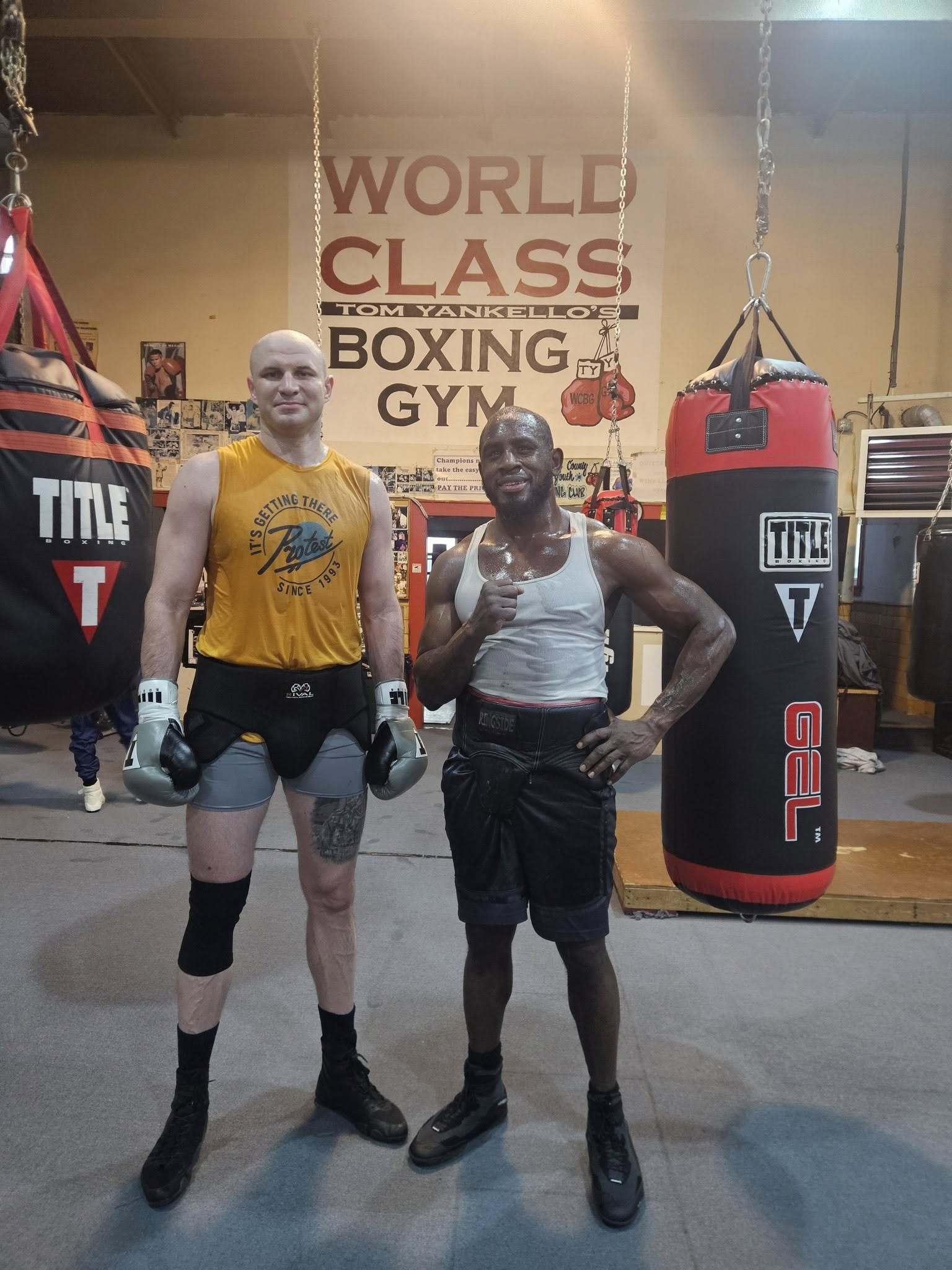
But there’s also been a major shift in my coach’s approach to sparring.
We now do a lot more light technical drilling focused on refining specific skills. Over the four to five months I spent getting ready for the fight, I only did about 20 rounds of hard sparring—meaning sparring designed to simulate a real fight as closely as possible. And none of that hard sparring took place in the final two weeks leading up to the bout.
This method is the smartest way forward. Many UFC fighters have adopted this approach because it limits unnecessary head trauma. Boxing, however, is still infamous for “doghouse” sessions—sparring that’s essentially a live fight, just with headgear and larger gloves. But even with the extra padding, too many fighters leave the best of themselves in the gym, showing up less fresh for the actual fight and shortening their careers in the process.
I took a pretty solid punch in my first fight back—one that looked rough to everyone watching. But because I hadn’t taken any damage in training, and thanks to the biomechanics work that kept me well-grounded and structurally sound, I absorbed it cleanly with no lingering effects.
In short, sparring sessions were exactly what they’re supposed to be: a place to learn and hone technique. I did fewer than three hard sparring sessions total, which gave me more room to develop my skill without compromising my health.
Besides, no matter how intense sparring gets, it still doesn’t come close to replicating a real fight. There’s less protection, real bad intentions, and the added stress of the crowd—not to mention a referee whose main job is to keep the action going, not necessarily to keep you safe.
My approach to health and recovery while boxing at 40
I already touched on this briefly, but I want to go deeper here. I was already in shape—I wasn’t getting off the couch and jumping straight into sparring. In this section, I want to talk about some specific things I did that likely have me performing at a higher level now than I did in my 30s—or even my 20s.
Imagine you’re driving a race car with shitty tires and brakes. No matter how good your driving is, you’ll never get the full potential out of the car. You can’t hit top speed, can’t take tight corners, and you sure as hell won’t win any races.
That was me—except my issues weren’t obvious. Unlike a racecar, where a mechanic would spot the problem immediately, my performance issues were hidden. I didn’t realize until recently that I’d been living with reduced lung capacity and hypothyroidism for most of my life.
I discovered the lung issue while reviewing the bloodwork I get every three months. My CO₂ levels were creeping into COPD territory. The numbers looked like I’d been a pack-a-day smoker for years and never exercised. But I was in my 30s, never smoked, and could still run a 7-minute mile.
The blood test showed my body wasn’t handling respiration properly.
 After some back-and-forth with my primary care physician (he was more annoyed that I got bloodwork done without his referral than concerned about the results), I finally got sent to a pulmonologist. Fortunately, the pulmonologist was much more reasonable. He ran a full panel of tests and confirmed the issue: my lung function had been chronically low, and now it was starting to affect my performance.
After some back-and-forth with my primary care physician (he was more annoyed that I got bloodwork done without his referral than concerned about the results), I finally got sent to a pulmonologist. Fortunately, the pulmonologist was much more reasonable. He ran a full panel of tests and confirmed the issue: my lung function had been chronically low, and now it was starting to affect my performance.
He prescribed a daily inhaler—and I haven’t had to use my rescue inhaler since. The difference was immediate. I sparred a few days later and had no problem going six rounds. But the whole experience left a sour taste in my mouth about conventional medicine. That’s when I turned to Rebel Health.
When I started working with Rebel, they ran a comprehensive blood and genetic test. The results? My thyroid was completely out of whack. I’ll spare the deep dive here (though I’ll drop some terms for the biochem nerds): I was overproducing reverse T3 (which slows metabolism) and underproducing T3 (which speeds it up). In effect, I had hypothyroidism—and the genetic testing confirmed it was congenital.
That discovery explained a lot.
Even when I was lean and training full-time, I always carried stubborn fat around my midsection that just wouldn’t go away. And once I stopped competing, I couldn’t drop below 225 pounds, no matter how clean my diet was or how often I worked out.
Two weeks after starting thyroid medication (25 mg of liothyronine), I dropped 10 pounds—despite being hungrier than I’d been in a long time. My metabolism had finally reset.
Rebel Health Alliance also sponsored my fight back and helped me to cover some vital training expenses, including the fees for my opponent.
 I’m 215 pounds now, the same as I was in my 20s, but I’m noticeably leaner—especially in my midsection—than I ever was back when I was training four hours a day. That’s the power of fixing foundational health issues.
I’m 215 pounds now, the same as I was in my 20s, but I’m noticeably leaner—especially in my midsection—than I ever was back when I was training four hours a day. That’s the power of fixing foundational health issues.
With those two problems handled, I’m confident I’m more competitive now than I was in my so-called prime. I’ve been fortunate that I never had issues with testosterone. As long as I get a few solid nights of sleep, my total testosterone stays around 800 ng/dL. That said, the excess body fat and sluggish thyroid had dragged it down before.
 Now, my bloodwork—testosterone, growth hormone, and everything else—shows I can still compete with guys younger than me. And I proved it on July 12th. My opponent was 34 years old. He didn’t make it out of the first round.
Now, my bloodwork—testosterone, growth hormone, and everything else—shows I can still compete with guys younger than me. And I proved it on July 12th. My opponent was 34 years old. He didn’t make it out of the first round.
But just to be safe, I also started a supplement regime that was both safe for World Anti Doping Agency Protocols and minimized the amount of individual substances I’d have to take. Compliance is the most important part of any supplement protocol because if you don’t take what you’re supposed, you won’t get the results promised.
That’s when I found Mita Nutra.
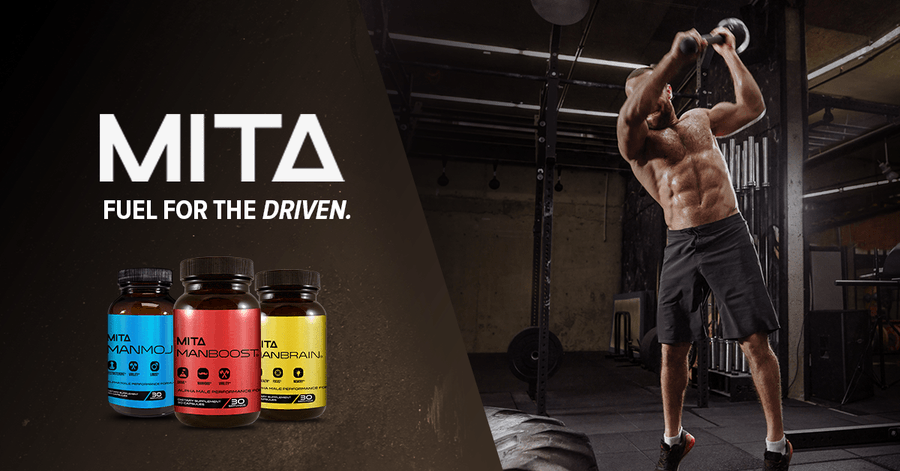 When I put together a list of what supplements would optimize my physical capabilities while being WADA compliant, Mita Nutra was already making this stuff in the exact combinations I needed.
When I put together a list of what supplements would optimize my physical capabilities while being WADA compliant, Mita Nutra was already making this stuff in the exact combinations I needed.
I wrote about their Mangreens Supplement and their Power which is a mix of Trimethylglycine, Beta-Alanine, L-Carnitine, and Creatine.
 Until someone does it better, I can’t recommend anyone else to get athletic training supplements from. Their products are manufactured in a cGMP and NSF-certified facility. If you know what that means, you know how important it is for someone competing in a regulated sport.
Until someone does it better, I can’t recommend anyone else to get athletic training supplements from. Their products are manufactured in a cGMP and NSF-certified facility. If you know what that means, you know how important it is for someone competing in a regulated sport.
What’s next for this 40 year old boxer
As of this writing, I’m about three weeks out from the launch of Hard Lessons From The Hurt Business: Boxing And The Art of Life. I’m dealing with everything that comes with it—speaking gigs, interviews, and the general chaos of a book release. I’ve also got a vacation planned in Portugal and Spain for October 2025. So, I probably won’t be training for another fight until the end of the year. But I’ll still be in the gym, and I’m planning to fight 3–5 times in 2025, all at cruiserweight.
One thing that’s really surprised me—although, in retrospect, maybe it shouldn’t—has been the response from people. I’ve received so many messages from guys telling me how inspiring it was to see a man in his 40s step back into the ring.
Honestly, my reasons for this fight were completely selfish. I enjoy inspiring people and I’m honored when I’m seen as a role model—but that’s not why I did this.
I did it to test myself. I did it to challenge my ideas. And I did it to help sell books. But in the process, I ended up doing something I can truly be proud of—and apparently, something that means a lot to others, too.
I appreciate you all. And, as always, the rest is up to you.

